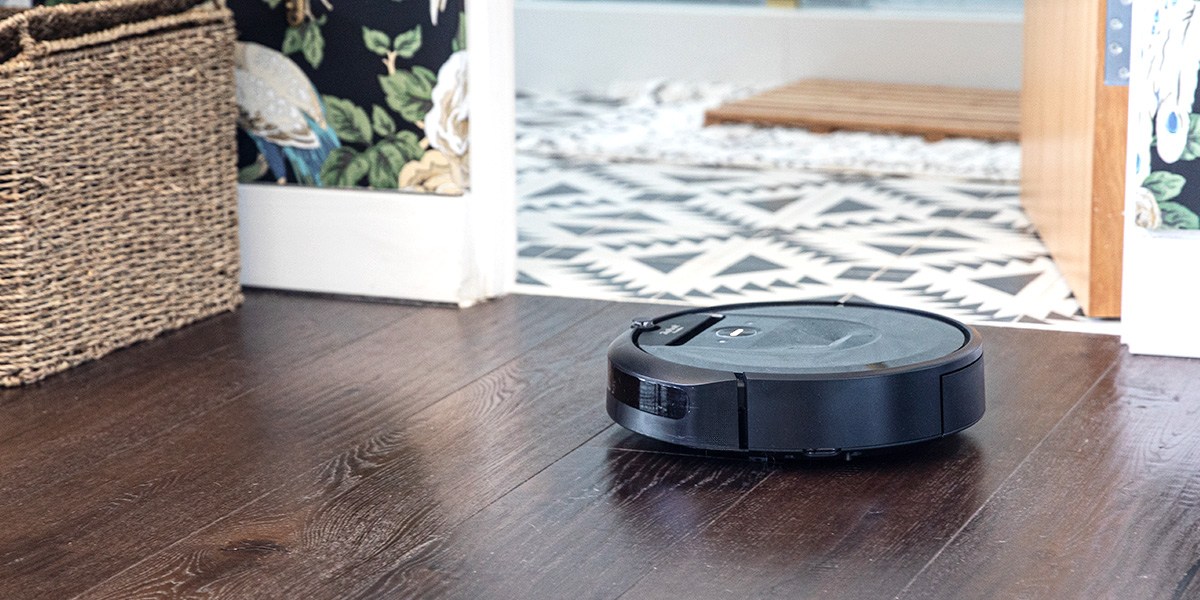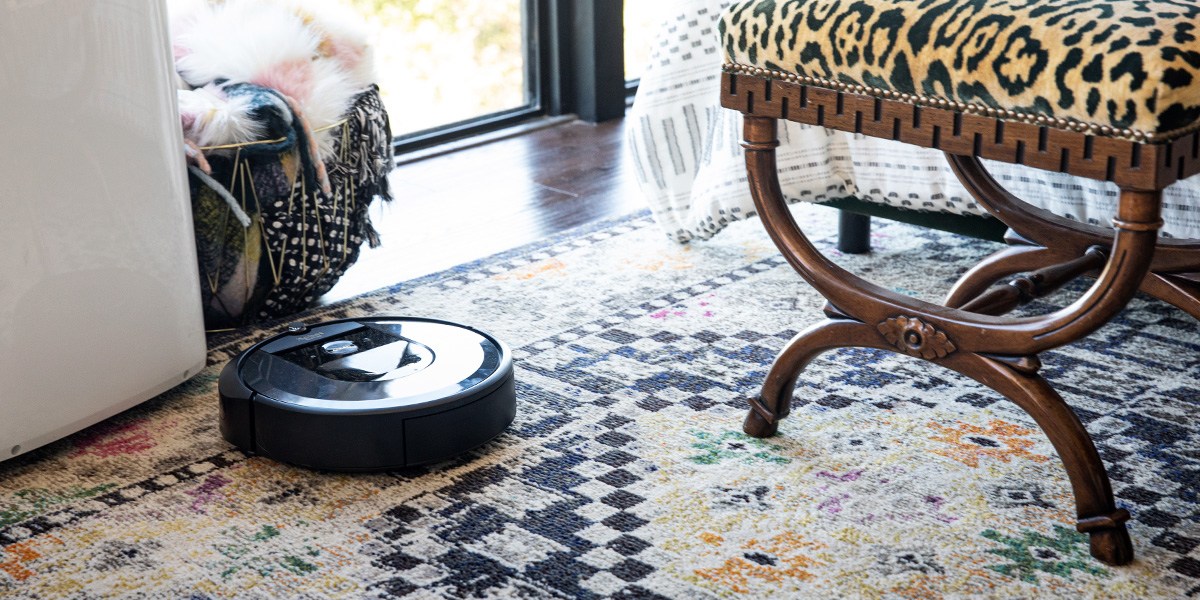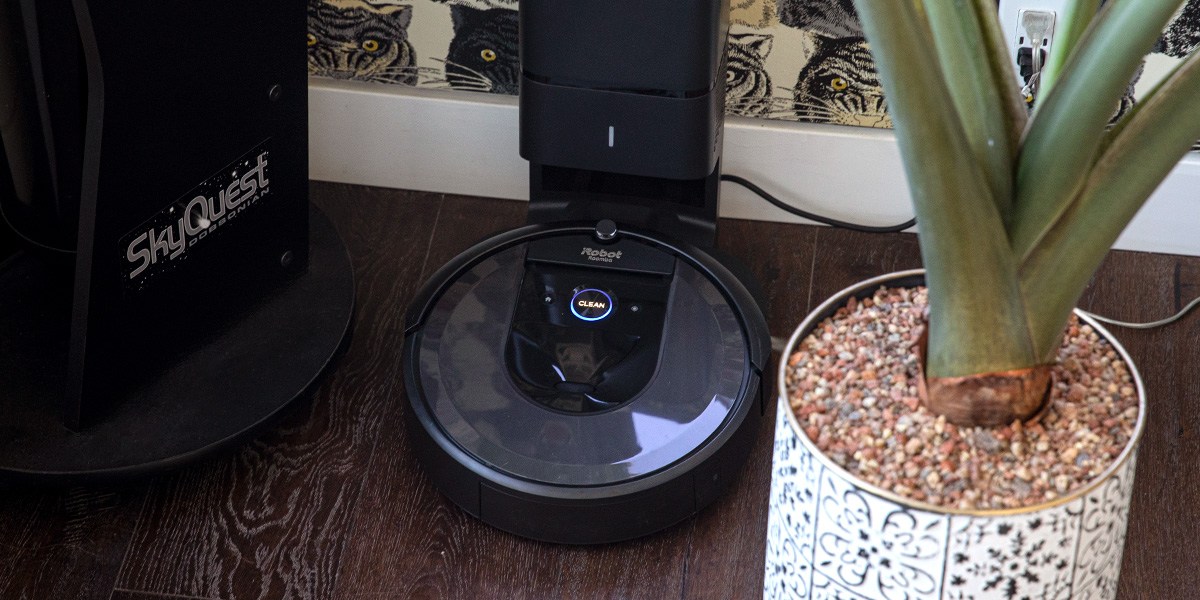Comparing the Roomba i7 and Roomba i7+
Many Roombas offer advanced features and technology that take the hassle out of cleaning your floors. That’s why finding the right one for your home can be so tricky. When you’re deciding between the Roomba i7 and Roomba i7+, the challenge is even greater because these robots are incredibly similar.
The i7 and i7+ feature advanced navigation that allows them to learn and map your home, remembering specific rooms for targeted cleaning. They offer 10 times the suction power of the Roomba 600-series robots, so they work well on hard floors and carpeting. They can clean for over an hour on a single charge and are easy to operate through the connected app or with voice commands.
There is, however, one major difference between these models: the i7+ is a self-emptying robot that empties itself whenever its bin is full, while the i7 requires manual emptying when full. So, it all comes down to how much you hate the idea of regularly emptying a dustbin.
The BestReviews Testing Lab put these Roombas to the test to see how they performed. Because their specs are so similar, you likely won’t be disappointed with either robot. However, the i7+ is a better fit for those who want to do as little work as possible. Pet owners with lots of hair to clean up will greatly appreciate the self-emptying feature, too. On the other hand, the i7 is a good fit if you’re on a budget and don’t mind frequently getting your hands dirty to clean it out.
Roomba i7 vs. Roomba i7+ specs
Released in 2018, the Roomba i7 and i7+ are nearly identical robots, so their specs match up exactly — except in one key area: the way that each model empties its bin. This affects not only the user experience but their overall performance.
Roomba i7 specs
 Testing team using Roomba i7 on hardwood flooring.
Testing team using Roomba i7 on hardwood flooring.
Product specifications
Battery life: 75 minutes | Dimensions: 13.34” L x 13.34” W x 3.63” H | Dustbin capacity: 0.4 L | Weight: 7.44 lb | Navigation software: iAdapt 3.0 with vSLAM | Mapping: Yes | Self-emptying: No | Object avoidance: No | Scheduling: Yes | Selective room cleaning: Yes | Warranty: 1 year
The Roomba i7 has an advertised battery life of 75 minutes, which is on the low end for an advanced robot vacuum. However, like the i7+, it has a Recharge and Resume feature, which enables the robot to return to the base to recharge when its battery is low; it then picks up its cleaning right where it left off. The i7 is roughly the same size as most robot vacuums, but it is slightly taller, so it may not fit under low-clearance furniture.
Like many premium Roombas, the i7 uses iAdapt 3.0 navigation software to learn your home and map specific rooms and areas. It doesn’t have a self-emptying base, though, which means its vacuuming may be interrupted if you’re unaware its bin is full and needs to be emptied.
Roomba i7+ specs
 Testing team using Roomba i7+ on area rug.
Testing team using Roomba i7+ on area rug.
Product specifications
Battery life: 75 minutes | Dimensions: 13.34” L x 13.34” W x 3.63” H | Dustbin capacity: 0.4 L | Weight: 7.44 lb | Navigation software: iAdapt 3.0 with vSLAM | Mapping: Yes | Self-emptying: Yes | Object avoidance: No | Scheduling: Yes | Selective room cleaning: Yes | Warranty: 1 year
Like the i7, the Roomba i7+ can clean for over an hour without recharging and has the Recharge and Resume feature to ensure that it finishes its cleaning jobs. It has the exact dimensions as the i7, so it’s slightly taller than other Roomba vacuums. It also comes with the Clean Base Automatic Dirt Disposal, which empties the Roomba’s internal dustbin when it’s full without your assistance.
The i7+ uses the same navigation software as the i7 and other premium Roombas, including the i3+, i8+ and s9+. This allows it to learn your home’s floor plan, so you can send it out to vacuum specific rooms. It doesn’t have obstacle-recognition sensors like the Roomba j-series robots, though, so it may get stuck on items lying around the floor, such as cords and wires.
Key differences
- Self-emptying base: The only difference between how the i7 and the i7+ perform is the way their dustbins are emptied. The i7 comes with the standard Roomba Home Base, so it can’t empty its internal bin when it becomes full. Instead, the bin must be emptied manually. On the other hand, the i7+ includes the Clean Base Automatic Dirt Disposal that can empty the robot’s internal bin when full. This feature ensures that vacuuming continues uninterrupted.
- Included accessories: The i7 comes with a dual-mode virtual wall barrier to keep the robot from going into areas where you don’t want it and an extra high-efficiency filter. The i7+ includes an extra high-efficiency filter as well as an extra side brush.
Cleaning performance comparison
The i7 and i7+ were both tested in an area with low-pile carpeting and rugs and hard flooring. The testing area also contained multiple pets, leaving the robots to deal with plenty of pet hair. Both models cleaned the space effectively, so we noticed a major difference in the amount of hair, dust and debris on both the hardwood and carpeting afterward.
We were also impressed with how well the i7 and i7+ handled large pieces of debris. Both robots picked up big pieces of dog and cat food on hard flooring and carpeting, making it an excellent option for homes with children or pets.
Compared to premium robot vacuums like the Roomba s9+, though, we noticed that the i7 and i7+ worked more slowly. They often needed multiple passes over an area to fully remove hair and debris, particularly on carpeting, while the s9+ could handle most messes in a single pass. However, the s9+ has stronger suction power than the i7 and i7+. It provides 40 times the suction power of the Roomba 600 series, while the i7 and i7+ only offer 10 times the suction, so we expected it to work more efficiently.
Brush rolls
The i7 and i7+ both have anti-tangle dual multisurface rubber brushes. The rubber brush roll is flexible, which lets it adjust to different floor surfaces and discourages hair from tangling around it. After testing, we didn’t see any hair wound around either model’s brush roll — and the few pieces of hair that were on the brushes were easy to remove with our fingers.
Additionally, the i7 and i7+ have identical edge-sweeping brushes. Each robot has one that helps pull dirt, hair and other debris from along the walls and corners of a room toward the vacuum, so it can clean these areas more effectively. However, we noticed that both models occasionally left debris in the corners because their round shape didn’t allow them to really get into those areas.
Filters and dustbins
Both the i7 and i7+ have a high-efficiency filter in their dustbin that can trap up to 99% of pet dander and other allergens. These filters cannot get wet, so you can’t wash them. Instead, they require replacement every two months.
The i7 and i7+ also have the same dustbin, which is located at the back of the robot and has a capacity of 0.4 liters. However, because the i7+ is a self-emptying robot, its dustbin capacity isn’t as important as the i7’s. Because it can’t automatically empty itself, we had to manually empty the bin whenever it was full. During testing, we found that the bin sometimes filled up halfway through a cleaning session, so if you run the robot when you’re not home, it may not finish its session.
Design comparison
The i7 and i7+ are identical in design and appearance. They are both round and feature black and gray plastic construction. They have a top-mounted camera and three buttons on top for “Clean,” “Home” and “Spot Clean.”
These robots both have two large, rugged side wheels that feel sturdy and durable. They allow the i7 and i7+ to transition between different flooring surfaces quickly and easily. The robots’ front caster wheels pop out, so you can easily clean around them if hair or debris gets stuck.
Navigation comparison
The Roomba i7 and i7+ both use a top-mounted camera and iAdapt 3.0 with vSLAM software to navigate. Like other high-end Roombas, including the i3+, i8+, j7+ and s9+, they use smart mapping to learn and remember the rooms in a floor plan. As a result, they can clean specific rooms rather than the entire floor for targeted cleaning.
However, neither the i7 nor the i7+ have the obstacle-avoidance feature like the Roomba j-series robots. That means they can’t sense objects in front of them and move around them. During testing, we noticed these models had trouble with items lying on the floor, especially power cords and wires. Because they can get stuck on these objects, the i7 and i7+ aren’t the best fit for cluttered homes.
Mapping comparison
The i7 and i7+ can go out on mapping runs, focusing solely on learning the space rather than cleaning. When we sent them out to map during testing, we were impressed with how accurately they captured the area. Both models can store up to 10 smart maps, too, so you can have a unique map for each floor of your home.
The i7 and i7+ also recognize Keep-Out Zones and Clean Zones to help you customize where your vacuum cleans. Keep-Out Zones prevent the robot from cleaning certain areas, such as where you keep your pet’s bowls. Clean Zones help the robot focus on high-traffic areas with more dirt and debris that require extra attention.
Features comparison
Because the i7+ is self-emptying, it can continue to clean when its bin becomes full without any assistance from you. The robot will return to its Clean Base and activate the suction that pulls the dirt from its internal dustbin into a bag at the top of the base. Then, the i7+ goes right back to vacuuming. On the other hand, when the i7’s bin becomes full, you have to manually empty it before it can return to cleaning. While the iRobot Home app alerts you if the bin is full, the i7 won’t finish its cleaning session if you aren’t there to empty it.
The i7+’s Clean Base is considerably larger than the standard base that comes with the i7, though. The Clean Base is 19 inches tall, while the i7’s standard Home Base is only 4.49 inches tall. You may have trouble finding a spot for the self-emptying base if you have a small home.
The i7 and i7+ are also compatible with voice commands through a home assistant like Google Assistant or Amazon Alexa. We connected both robots to Alexa through the iRobot Home app and used voice commands to tell them when to start, stop or pause vacuuming, vacuum a specific room and return to home base. Both models responded well, following the prompts within seconds.
Smartphone app
The i7 and i7+ are both Wi-Fi-connected Roombas, so they use the iRobot Home app to make their operation even easier. During testing, we found the app highly intuitive and easy to use, so we scheduled cleaning sessions, customized the smart maps and created Keep-Out Zones. Both models have access to all the same app features, which help simplify the user experience and make cleaning even more convenient.
Cleaning and maintenance
The i7’s dustbin must be emptied manually each time it finishes a job, but it’s also a good idea to get in the habit of cleaning it. Its bin, as well as the i7+’s, can be washed, so rinse it in warm water and dry it thoroughly before returning it to the robot.
However, be sure to remove the filter from the bin before washing it because the i7 and i7+ high-efficiency filters can’t get wet. Instead, you’ll need to replace the filter every couple of months.
The i7 and i7+ may have anti-tangle brushes, but iRobot still recommends cleaning them weekly. However, if you have pets, you should consider cleaning your brushes twice a week. These brushes and the side brush also need to be replaced periodically — iRobot suggests new brushes every six to 12 months. You can check on the status of your brushes and filter in the Product Health tab of the iRobot Home app, so you know when it’s time to replace them.
How we tested
For their cleaning performance, we tested the Roombas on both hard flooring and carpeting to see how they handled different surfaces. We paid special attention to how well they collected debris in hard-to-reach corners. We also tested their ability to pick up different types of debris, such as pet hair and pet food, and observed how many passes it took for the robots to fully remove the mess.
Because the smartphone app is essential to accessing all of its many features, we explored how easy it was to schedule cleaning sessions and use smart mapping. We also sent the Roombas on cleaning runs using voice commands. To keep them working well, we thoroughly cleaned them after a job and noted how much effort it took.
Price
The Roomba i7 regularly costs $449.99 and is available at Amazon and Walmart. The Roomba i7+ usually costs $799.99. You can find it at Amazon, Walmart and Wayfair.
 In addition to the higher upfront cost, choosing the i7+ means you’ll have to buy replacement dirt disposal bags for the Clean Base, which cost $20 per three-pack.
In addition to the higher upfront cost, choosing the i7+ means you’ll have to buy replacement dirt disposal bags for the Clean Base, which cost $20 per three-pack.
Bottom line
In terms of cleaning performance, battery life and navigation capabilities, the Roomba i7 and i7+ are identical robots. Both work best for small- to medium-size homes but can effectively handle pet hair and large debris on hard floors and carpeting. However, we love the convenience of the i7+’s self-emptying design. In a home with children or multiple pets, not having to manually empty the dustbin in the middle of every cleaning session can be a lifesaver. But the i7 is considerably cheaper than the i7+ and can do everything it does except empty itself.
Want to shop the best products at the best prices? Check out Daily Deals from BestReviews.
Sign up here to receive the BestReviews weekly newsletter for useful advice on new products and noteworthy deals.
Jennifer Blair writes for BestReviews. BestReviews has helped millions of consumers simplify their purchasing decisions, saving them time and money.
Copyright 2023 BestReviews, a Nexstar company. All rights reserved.







